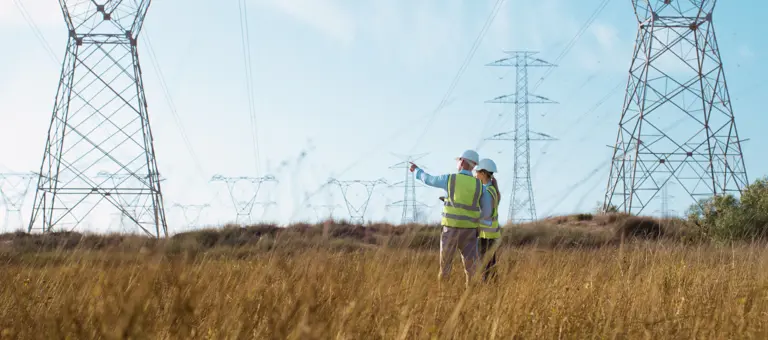
Maintaining the stability of the New South Wales power system
21 August 2024
How do you ensure the future stability of the New South Wales power system?
The retirement of coal generators and the growth in inverter-based resources (IBR) in New South Wales (NSW) is driving an urgent need to add new sources of system strength to the state’s power system.
System strength is the ability of the power system to maintain and control the voltage waveform at any given location, both during steady state operation and following a disturbance. Insufficient levels of system strength pose risks to the safety and stability of the system and increases the likelihood of supply interruptions to consumers.
Transgrid, as the System Strength Service Provider for NSW, is obligated to ensure sufficient system strength services are available to maintain the safety and stability of the NSW power system for decades to come. Doing so will enable sufficient IBR capacity, including solar, wind and battery storage, to stably connect to the power system to achieve the renewable targets of federal and state governments.
Transgrid is developing a portfolio of system strength solutions to meet their regulatory obligations and to maximise net-market benefits. The benefits delivered by the solutions are assessed via the Regulatory Investment Test for Transmission (RIT-T) administered by the Australian Energy Regulator (AER).
This system strength RIT-T is particularly challenging
This system strength RIT-T is the first of a kind and is particularly challenging due to the non-linear behaviour of system strength, the need for multiple solutions to meet the need, and having the option of over 100 possible solutions - resulting in billions of potential combinations.
Baringa supported Transgrid through their system strength RIT-T by undertaking market modelling to identify optimal combinations of solutions to maintain system strength in NSW and determine their relative market benefits.
The project required an innovative market modelling methodology
In collaboration with Transgrid, we developed an innovative modelling methodology to account for the complexity of system strength and to enable us to identify optimal portfolios of solutions.
Our methodology integrated non-linear system strength constraints into our market model of the National Electricity Market (NEM) and optimises the trade-off between investment in new build solutions, upgrades and modifications to existing or proposed plant, or changes in the operation of synchronous machines operating in the energy market. This allowed us to determine the optimal portfolio of solutions to meet Transgrid’s obligations whilst maximising net market benefits.
This was Australia's first published modelling approach to simultaneously optimise energy market outcomes and system strength requirements.
Meeting system strength obligations and ensuring economic value
The project resulted in the publication of the Project Assessment Draft Report (PADR) and Baringa’s Market Modelling Report, which seeks to address a myriad of technical, regulatory, and commercial challenges related to system strength.
Related Client Stories

Shaping New Zealand’s energy transition conversation
How do you create a distributed energy model that draws on best practice from around the world but is also fit-for-purpose for New Zealand?
Read more
Electricity network operator: securing critical national infrastructure with hybrid defences
Breaking new ground with a hybrid security approach.
Read more
Maximising impact from AI investment for a global energy leader
Discover how a series of experiential learning events resulted in employee confidence in AI skills hitting 85%.
Read more
Using AI to manage applications for connecting low-carbon devices
With growing calls for processes to be standardised, Baringa and Energy Networks Association (ENA) came together to develop and launch the first central industry platform to transform the way registrations for low-carbon devices are managed.
Read moreIs digital and AI delivering what your business needs?
Digital and AI can solve your toughest challenges and elevate your business performance. But success isn’t always straightforward. Where can you unlock opportunity? And what does it take to set the foundation for lasting success?